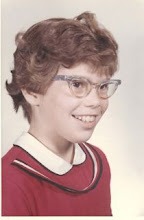I am so pleased to welcome Jennifer Ochoa as today's guest blogger. Jennifer reads and writes and shares BOOKS, BOOKS, BOOKS with the eighth graders in her classes at MS 324 in NY, NY. When she’s not hanging out with eigth graders, she’s usually hanging out with grown-ups, but still talking about reading, writing and books. In a recent move, more than half the boxes were books! You can follow her on Twitter. She’d love to hear your latest book love, or share a recommendation from her own reading life. Jennifer gets a ginormous gold star in my book because she wrote this post while packing up her apartment to move! That's dedication for you.
 |
| Jennifer Ochoa |
“Head’s Up!”: Strategies for Managing New Genres
Now that it’s February, the groans and eye-rolls have ceased when I say, “Get out your books and LET’S READ!” Even the grouchiest readers have found a reading niche in our classroom. Independent Reading is a cozy, book-filled time. Now it’s time to up our game a bit.
When we came back after winter break, everyone made Reading Resolutions. Because 8th graders sometimes copy motivation, I wasn’t surprised many people decided they needed to “Read more non-fiction” and “Try a new genre,” which were my resolutions. It’s possible to accomplish our goals, but moving out of a comfort zone you’ve just found isn’t easy. Recently, many of our reading conferences have been “Getting started” conferences for new, more complicated, books and unfamiliar genres.
 One way I’ve found getting started on new genres feels possible for a kid is by having “Head’s Up!” conversations with me. In these conversations (and on the corresponding reminder charts on the wall), I try to craft multiple ways into a genre that anticipate aspects of that genre that might confuse a reader. These conversations offer “head’s up” tips that can help a kid manage, even when I’m not there. Below are examples we’ve used as a class when we recently started reading Karen Hesse’s novel in verse, Out of the Dust:
One way I’ve found getting started on new genres feels possible for a kid is by having “Head’s Up!” conversations with me. In these conversations (and on the corresponding reminder charts on the wall), I try to craft multiple ways into a genre that anticipate aspects of that genre that might confuse a reader. These conversations offer “head’s up” tips that can help a kid manage, even when I’m not there. Below are examples we’ve used as a class when we recently started reading Karen Hesse’s novel in verse, Out of the Dust:Heads Up! When you read HISTORICAL FICTION, pay attention to, or remember that:
- It is a regular story about regular people. The characters have many of the same feelings, ideas, and conflicts that you’ve read about in realistic fiction. The big difference is that these characters’ experiences are happening during a different time in history.
- The time period in history, which is the setting, is important in this kind of story. Because the setting is so important, it is a good idea to be a bit familiar with that time and place in history. If you know a little about the real events of that time period, the characters’ experiences and daily lives won’t feel as confusing to you.
- Because of the setting, there might be some confusing details. Sometimes the characters will say something or talk about a detail from life (like their clothes, or tasks they have to do), and the phrases and details will be unfamiliar. Remember, every time period has different slang, fashions, and details of life. Even though this might confuse you, that’s ok. Try to figure out what the character is talking about or referring to. If you can’t, ask someone. If no one is available to ask, read on and decide if you still understand what is happening in the story. Probably you will.
Heads Up! When you read a POETIC NOVEL, remember:
 |
- Each poem contains elements of the story about the characters, conflict, setting, theme or plot
- Each poem can usually stand on its own as poem, but when you put all the poems together, they tell the whole story.
- The author uses figurative language like metaphors and imagery to help us imagine the story, tell us what’s beneath the surface of the plot.
The “Head’s up” conferences are often enough to get readers started, feeling like they can manage the book on their own. Usually, kids are excited to try something new, they just worry they’ll be confused and have to abandon the book. These conversations help ease the worry, and empower the kids to read widely and challenge themselves. We have many “Head’s up” lists available in our classroom, so that whatever genre a reader might like to try, getting started feels possible.
Jennifer, what a thoughtful way to anticipate potential obstacles to readers as they explore different genres. I might have been able to finish Moby Dick in high school had you been my teacher!


You can always count on Jen to have good advice!
ReplyDelete